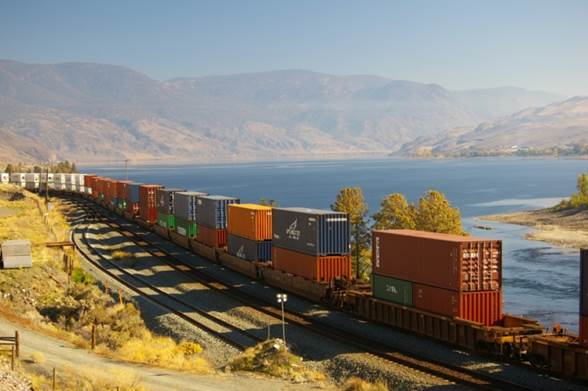
“See tracks? Think train!”
Based on the decline in rail-related accidents in recent years, it’s a message that people are hearing. But messages about saving lives are always worth repeating to make sure they’re top-of-mind and we don’t become complacent.
It all comes down to this: if you need to cross a rail line, approach it expecting to see a train and only cross when it’s safe.
With that thought in mind, let’s look at some related tips our friends at Operation Lifesaver put together to keep you safe at rail crossings:
- Never drive around lowered gates – it’s illegal and deadly. If you suspect a signal is malfunctioning, call the 1-800 number posted on or near the crossing signal or your local emergency number.
- Never race a train to the crossing. Even in a tie, you lose.
- Do not get trapped on the tracks. Only proceed through a highway/railway crossing if you are sure you can completely clear the crossing without stopping. Remember, the train is one metre wider than the tracks on both sides.
- If your vehicle stalls on a crossing, immediately get everyone out and far away from the tracks. Call 911 or your local emergency number for assistance. Look for a 1-800 emergency notification number nearby to contact the railway.
- At a multiple track crossing waiting for a train to pass, watch out for a second train on the other tracks, approaching in either direction.
- ALWAYS EXPECT A TRAIN! Trains do not follow set schedules.
- Even if the locomotive engineer sees you, a freight train moving at 120 km/h can take up to two km or more to stop once the emergency brakes are applied; more than 18 football fields in length!
- Don’t be fooled by the optical illusion. The train you see is closer and faster moving
To help get the rail safety message out, there are a number of initiatives and resources available on the Operation Lifesaver website, as well as events during Rail Safety Week.
Be sure to connect with Operation Lifesaver on Facebook or Twitter to keep up with the latest news and events.
Do you have any rail safety tips to share? Leave us a comment below or connect with us on Twitter of Facebook and let us know.
Always stop before crossings whether gates are up or down, unbuckle seatbelt and look both ways before crossing. Proceed through railway crossing when you are sure you can clear the crossing without stopping. Once clear of the crossing and when safe to do so, pull over and buckle up.
I also would like to comment that buckling up a seat belt does not make for better drivers and will not reduce the number of accidents. The reasons, I believe, there are such horrific accidents and all are killed instantly is directly due to the distractions caused by cell phones, and other technology. Radios once were limited to service vehicles only, like police and off-road vehicles, loggers, and transport vehicles. Seat belts only keep bodies in the vehicles so they don’t need to be scraped up off the pavement or searched for in the chuck or hung up on a tree, they do not prevent accidents. Better we make defensive driving courses mandatory and ban all cell phone usage, pagers or the like. Most drivers and passengers are killed outright upon impact, instantaneously, directly resulting from distractions like cell phone usage while driving. All technology needs to be banned from vehicles while driving. Driving is serious business. There are more lives than your own in your hands as a driver. Always drive defensively while behind the wheel of any vehicle.
A great comment Aileen – driving is serious business!